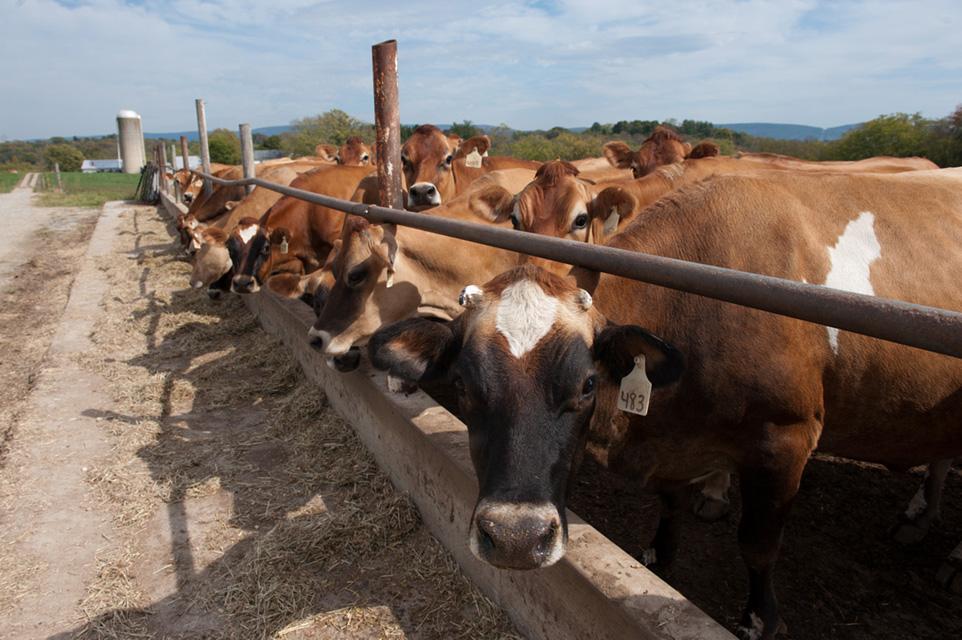The average productive life of a dairy cow in the U.S. is estimated to be around 2.8 lactations. This means that many cows are culled from the herd before they reach their highest production potential, which is normally achieved during the third or greater lactations.
The trend for a younger herd has been perpetuated by improved reproductive management, the use of sexed semen, and genomic selection, which has resulted in a greater population of genetically superior replacements. For farms that are maintaining their herd size, a surplus of replacements leaves room for more selective culling. Producers have also been motivated to incorporate younger animals into their herds because these animals are usually genetically superior to their older herd mates. However, in recent years, interest in promoting longevity has received attention due to the high costs associated with raising replacements and, to a lesser extent, concerns related to public perceptions.
Replacement heifer costs are often ranked as the second or third greatest cost associated with dairy production, ranking below only feed and (when applicable) labor. The estimated total cost associated with raising a heifer from birth to first calving is in the range of $1,800 to $2,400 per animal. These are costs that are incurred before an animal even begins to generate a return. Once a replacement calves, she must not only pay for her daily living expenses, but she must also start paying back her rearing costs. On average, it takes around 2 full lactations for a replacement to fully pay off her “debt”, so the goal should be to retain productive animals in the herd through at least 2 lactations.
Table 1 shows how the proportion of a cow’s life spent in a productive state changes as the number of completed lactations increases, assuming each lactation is 10 months and each dry period is 2 months. The greatest gains in productive life are observed when cows complete their first, second, and third lactations. After three completed lactations, further gains are relatively small. Of course, this does not factor in the production potential of animals as they age or account for body tissue growth which will, in most cases, be utilized as a food source once animals are culled.
Completed Lactations |
Age (Months) |
Proportion of Life in Production (%) |
|---|---|---|
1 |
34 |
29 |
2 |
46 |
43 |
3 |
58 |
52 |
4 |
70 |
57 |
5 |
82 |
61 |
6 |
94 |
64 |
7 |
106 |
66 |
8 |
118 |
68 |
Increasing longevity of the herd can be achieved through both genetic and management improvements. Genetic selection for health traits, such as udder or metabolic health, and fertility traits, such as daughter pregnancy rate, can improve a cow’s genetic potential to stay in the herd longer. Using the Productive Life Index when choosing bulls can also be helpful. This index allows for improvements in productive life independent of milk production traits.
In addition to genetic selection, it is likewise important to provide an environment that is conducive to allowing cows to remain productive in the herd longer. Providing appropriate nutrition at various stages of life to support lactation, reproduction, and maintenance of appropriate body condition will not only promote productivity, but will also help to ensure fertility and prevent metabolic diseases, such as ketosis, milk fever, and displaced abomasum. The use of proper milking procedures and routine maintenance and cleaning of milking equipment will promote udder health. Additionally, providing adequate access to shelter and clean bedding will also promote health and productivity. As we begin to approach the hot summer months, heat abatement is also critical to maintaining animal health during all phases of life.
Keeping healthy and productive cows at least through their third lactation should allow you to capture their greater-profit potential. Furthermore, keeping these animals in the herd reduces the number of replacements that must be raised to maintain herd size, and thus, can reduce overall costs of the replacement program. However, it is important to remember that cows should not be maintained in the herd simply because they are older. If an older cow is no longer productive, has health problems, or does not otherwise fit your management system, she should not be kept just for the sake of improving longevity.
 English
English العربية
العربية Български
Български 简体中文
简体中文 繁體中文
繁體中文 Hrvatski
Hrvatski Čeština
Čeština Dansk
Dansk Nederlands
Nederlands Suomi
Suomi Français
Français Deutsch
Deutsch Ελληνικά
Ελληνικά हिन्दी
हिन्दी Italiano
Italiano 日本語
日本語 한국어
한국어 Norsk bokmål
Norsk bokmål Polski
Polski Português
Português Română
Română Русский
Русский Español
Español Svenska
Svenska Català
Català Filipino
Filipino עִבְרִית
עִבְרִית Bahasa Indonesia
Bahasa Indonesia Latviešu valoda
Latviešu valoda Lietuvių kalba
Lietuvių kalba Српски језик
Српски језик Slovenčina
Slovenčina Slovenščina
Slovenščina Українська
Українська Tiếng Việt
Tiếng Việt Shqip
Shqip Eesti
Eesti Galego
Galego Magyar
Magyar Maltese
Maltese ไทย
ไทย Türkçe
Türkçe فارسی
فارسی Afrikaans
Afrikaans Bahasa Melayu
Bahasa Melayu Kiswahili
Kiswahili Gaeilge
Gaeilge Cymraeg
Cymraeg Беларуская мова
Беларуская мова Íslenska
Íslenska Македонски јазик
Македонски јазик יידיש
יידיש Հայերեն
Հայերեն Azərbaycan dili
Azərbaycan dili Euskara
Euskara ქართული
ქართული Kreyol ayisyen
Kreyol ayisyen اردو
اردو বাংলা
বাংলা Bosanski
Bosanski Cebuano
Cebuano Esperanto
Esperanto ગુજરાતી
ગુજરાતી Harshen Hausa
Harshen Hausa Hmong
Hmong Igbo
Igbo Basa Jawa
Basa Jawa ಕನ್ನಡ
ಕನ್ನಡ ភាសាខ្មែរ
ភាសាខ្មែរ ພາສາລາວ
ພາສາລາວ Latin
Latin Te Reo Māori
Te Reo Māori मराठी
मराठी Монгол
Монгол नेपाली
नेपाली ਪੰਜਾਬੀ
ਪੰਜਾਬੀ Afsoomaali
Afsoomaali தமிழ்
தமிழ் తెలుగు
తెలుగు Yorùbá
Yorùbá Zulu
Zulu ဗမာစာ
ဗမာစာ Chichewa
Chichewa Қазақ тілі
Қазақ тілі Malagasy
Malagasy മലയാളം
മലയാളം සිංහල
සිංහල Sesotho
Sesotho Basa Sunda
Basa Sunda Тоҷикӣ
Тоҷикӣ O‘zbekcha
O‘zbekcha አማርኛ
አማርኛ Corsu
Corsu Ōlelo Hawaiʻi
Ōlelo Hawaiʻi كوردی
كوردی Кыргызча
Кыргызча Lëtzebuergesch
Lëtzebuergesch پښتو
پښتو Samoan
Samoan Gàidhlig
Gàidhlig Shona
Shona سنڌي
سنڌي Frysk
Frysk isiXhosa
isiXhosa